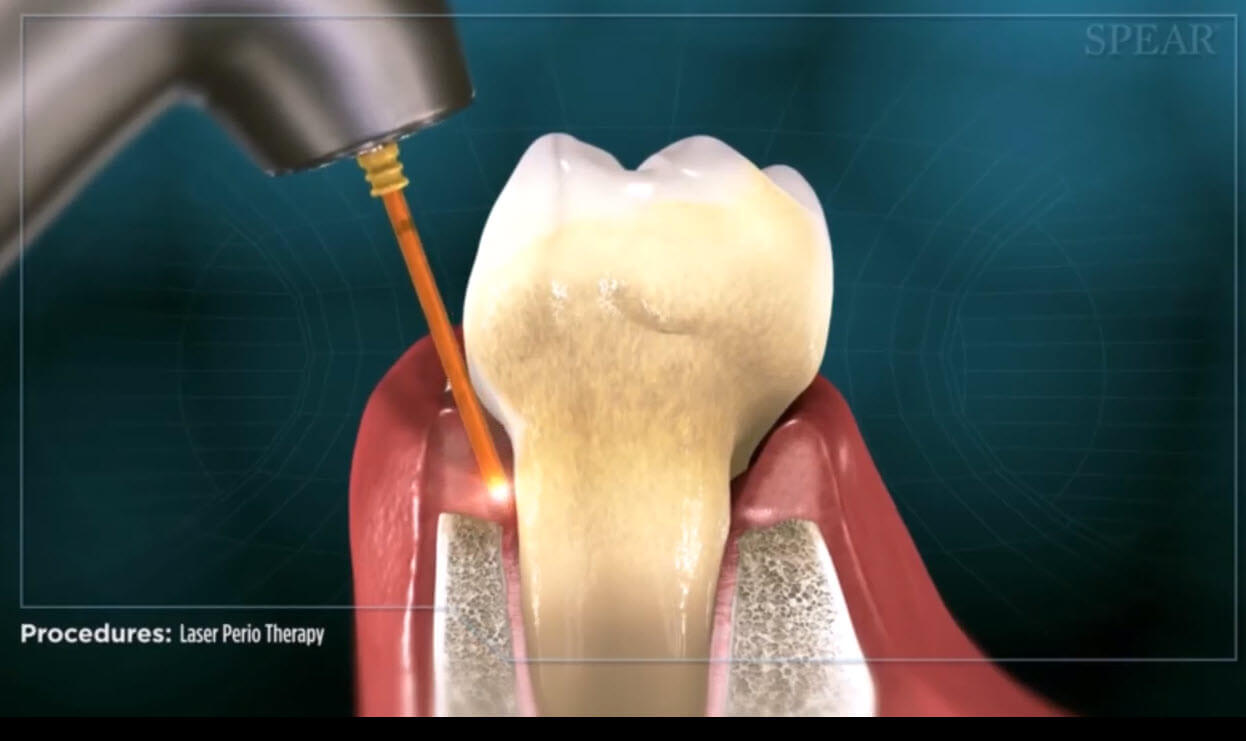Over the past several years I have been following the research on lasers in dentistry. Recent research findings have indicated that now is the right time to incorporate the Nd:YAG laser into my New York City practice. Formally known as the “neodymium-doped yttrium aluminum garnet,” it is named for the crystal it uses. The properties of this laser meet all the goals of surgery for periodontal disease and peri-implantitis, but the treatment can be even less invasive than surgery. In this newsletter, I would like to review my thought process of incorporating this newer technology into my practice.
Nd:YAG Laser
The primary goal of periodontal disease therapy is to establish periodontal health. This can be accomplished through pocket reduction and attachment gain. The ultimate goal is to regenerate lost structures, including bone, cementum, and periodontal ligament. Over the past year, I have been using a microscope with piezo ultrasonics for scaling and root planing. Research shows that a large percentage of calculus remains after phase I therapy. The microscope and its associated illumination allow me to remove more calculus than possible with loupes. This has resulted in a very significant reduction in deep probing depths leading to normal sulcus depths. After scaling and root planning, typically, a long junctional epithelium (LJE) is formed. This is a type of tissue adhesion to the tooth structure. Although LJE can be stable over time, it would be ideal if true reattachment (cementum and inserting collagen fibers) or regeneration (cementum, pdl, and bone) could occur with a minimally invasive technique. Regeneration can occur with surgical intervention, and that is sometimes the only way to address sites that do not heal with nonsurgical care. In the past, I have written newsletters based on articles comparing lasers to scaling and root planing. This research shows lasers are no more efficacious in reducing probing depths than scaling and root planing. However histologic studies by Yukna, in 2007 and Nevins in 2012, showed the Nd:YAG laser with piezo ultrasonic instrumentation (LANAP-Laser Assisted New Attachment Procedure) resulted in a new attachment in 3 months and regeneration and reattachment in 50% of the patients at 6months.
State of the Art Periodontal Treatments
Considering these research results and their implications for the treatment of periodontal disease, I decided that the combination of the microscope, piezo, and laser would allow me to do a number of things: maximize the amount of calculus removal, be more skillful with the laser, and have the greatest probability of regeneration or reattachment. So far, results in my New York practice have shown acceptance to be excellent. There is minimal to no post-op discomfort, and minimal recession is incurred. I look forward to exciting results using these minimally invasive technologies to treat the people of New York.
If you have patients who are interested in a comprehensive and minimally invasive way to treat their periodontal disease, please consider the combination of the microscope, piezo, and Nd:YAG laser. This approach works best when the tissues are inflamed. The laser targets a certain pigmentation found in inflammatory tissue and periodontal pathogens, so if possible, please don’t scale and root plane prior to referring the patient.
Patients in New York City should seek the highest level of care if there is a concern about periodontal disease. The Nd:YAG laser allows me to provide a better quality of care to everyone with, quite literally, laser precision. Contact me online or call (212) 702-9088 with questions or come into my practice for a consultation at any time.
